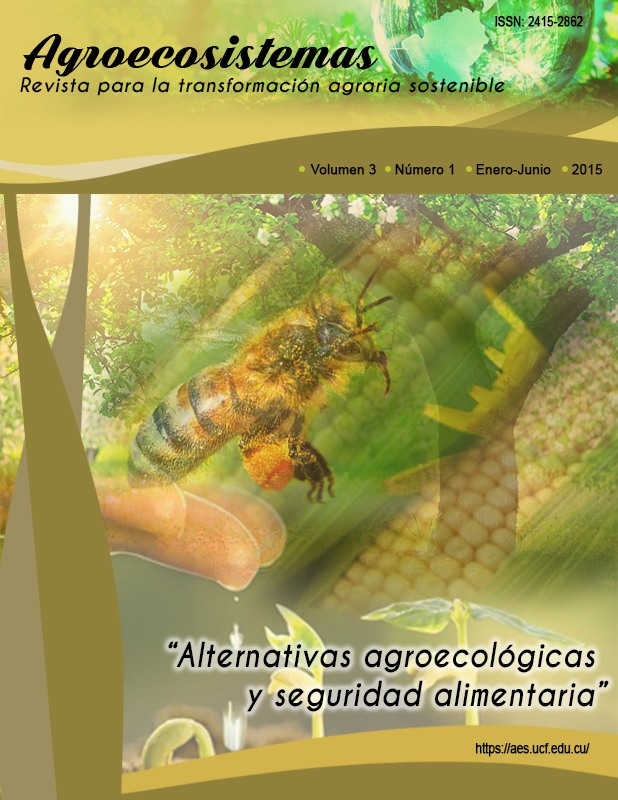<p class="Default">Seguridad alimentaria en los hogares según tipo de patio avícola en la provincia de Cienfuegos</p>
Resumen
La avicultura de traspatio o familiar se ha incrementado en los últimos años en la provincia de Cienfuegos, por lo que el objetivo de esta investigación fue evaluar aspectos de la seguridad alimentaria en hogares según tipo de patio avícola. Para un diseño observacional en la provincia se tomó aleatoriamente, elegidos de forma representativa y con selección probabilística del 95 %, 195 patios controlados (II) por la avicultura alternativa y la misma cantidad de forma contigua de los no controlados (I). Se aplicaron encuestas, que indagaban sobre aspectos sociales, inseguridad alimentaria (HFIAS) y percepción de componentes de la seguridad alimentaria en los hogares. Prevaleció el sexo femenino como persona que administra la alimentación en el hogar, con un alto grado de escolaridad. La prevalencia de la seguridad alimentaria fue mayor en el grupo II (20.0%), aunque con mayor cantidad de casos con inseguridad alimentaria leve (74.4 %). La inseguridad alimentaria moderada fue mayor en el grupo I (43.0%) y no se encontraron hogares con inseguridad alimentaria severa. Ambos grupos comercializan carne de aves y huevos, pero los del grupo II con mayor precio $35.70/ kg y $0.99/ u, respectivamente, que a su vez cuentan con mayor cantidad de aves. En ambos grupos influye negativamente en la seguridad alimentaria la baja disponibilidad, acceso, el alto precio y la poca variedad de los alimentos. El tiempo para comprar o cocinar los alimentos no se considera importante.
Palabras clave: Seguridad alimentaria, hogares, encuesta, patios avícolas.
Abstract
The backyard poultry keeping or family it has been increased in the last years in the county of Cienfuegos, them the objective of this investigation was to evaluate aspects of the household food security according to type of poultry yard. In a observational design in the county took randomness, elects in a representative way and with probabilistic selection of 95%, 195 controlled yard (II) for the alternative poultry keeping and the same quantity in contiguousway of those no controlled (I). Surveys were applied that investigated on social aspects, food insecurity (HFIAS, 2006) and perception of components of the food security at homes. The female prevailed as person that administers the feeding in the home, with a high degree ended. The prevalence of the food security was bigger in the group II (20.0%), although with bigger quantity of cases with light alimentary insecurity (74.4%). The moderate alimentary insecurity was bigger in the group I (43.0%) and they didn't meet homes with severe alimentary insecurity. Both groups market meat of birds and eggs, but those of the group II with more price $35.70 / kg and $0.99 / u, respectively, that count with bigger quantity of birds. In both groups, it influences negatively in the food security the availability, access, the high price and the little variety of the foods. The time to buy or to cook the foods is not considered important.
Keywords: Backyard poultry, food safety, home, survey.
Descargas
Publicado
Cómo citar
Número
Sección
Licencia
La editorial "Universo Sur", de la Universidad de Cienfuegos, publica el contenido de la Revista Científica Agroecosistemas bajo una Licencia Creative Commons Atribución-NoComercial-SinDerivar 4.0 Internacional.
© Podrá reproducirse, de forma parcial o total, el contenido de esta publicación, siempre que se haga de forma literal y se mencione la fuente.







